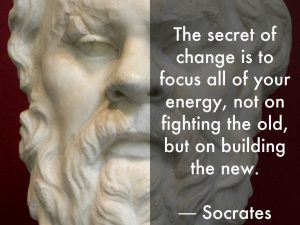Happy Week 20, Dear Readers!
Despite the name of this blog, sometimes I do get unhappy and rarely do I feel that wisdom is going to help me when I am indeed unhappy. The last thing I want is some schmuck trying to spout wisdom when all I want to do is punch someone in the face. Of course, that’s exactly what I’m going to do, so…sorry not sorry. 🙂 What makes us unhappy? I submit that change is a major source of unhappiness. Dr. Spencer Johnson created a career out of his smash hit book Who Moved My Cheese, selling a gazillion copies attempting to answer this very question.
But what about change makes it so awful? Occasionally change is thrust upon us, like an illness, or a bad boss. Some change you bring by your actions, directly or indirectly. This article discusses how to ensure that change that you’re bringing to yourself, your team, or your company is closer to the change you intended, rather than the change you caused inadvertently.
Now, the SCARF in Summer!

So, what is this scarf that I speak of? No, it’s not a piece of clothing, but a book, namely David Rock’s excellent work Your Brain at Work. In this work, he presents the SCARF Model, a popular neuroscience tool for determining how certain actions will cause fear responses or other undesirable outcomes.

Certainty – Ability to predict the future. To some extent, we need to know what’s going to happen or our brains start doing crazy things.
Autonomy – Perception that I can ( or cannot) change my environment. Do I have a say over what happens to me? If I don’t have choices, I’m going to start feeling stressed.
Relatedness – Feeling of security in relation to others. Do I belong in this group? Are they sharing information with me and collaborating? Or is this a dog eat dog situation?
Fairness – Transparency and clear expectations on rewards and recognition. Who’s winning here? Do I know the rules? Are they fair enough for me to feel that I have a chance in seeing rewards if I participate?
The way to use this model, in short, is to review the items you’re doing as a leader and ask yourself if this action would affect one of the SCARF parameters? Think of SCARF like a divining rod, finding trouble underneath the ground of change. Here are three areas where I see immediate applicability:
I. When we lead – we should ask ourselves each of these questions when we intend on introducing a change. For example, in my field of agile software development, when we say that the Project Manager is no longer assigning tasks but facilitating meetings, how does that affect the PM’s perception of their status? Can we position the PM as the Agile Champion for the team?
II. For ourselves – This model is also very powerful to probe why we’re upset. I get into funks on occasion where I can’t figure out why I’m in the funk in the first place. I have used this list to see if any of the five dimensions have been recently impacted.
Some time ago I had this happen. At the time, my mood at work varied more than the weather in Seattle, and I had hit a very low point. By going over the SCARF model I was able to center on what was bothering me so. I had lost Status, Autonomy, Relatedness, AND Fairness! (it was a rough time). The only thing I had was the certainty that our efforts would struggle greatly. It was clear that I had to move, and I did, and it made all the difference.
III. Parenting – Parents need all the tools we can get, especially with the almost-adult crowd we call teens. While a parent should not be able to affect their Status (unless we’re trying to embarrass them), the dimensions of Certainty and Fairness are ground we can have in common with our teens. At least with my teens, they have a keen sense of fairness, and if you can explicitly establish the SCARF model of understanding with them, you will have a more powerful vocabulary to work with.
I strongly recommend that you check out the SCARF model and give it a wearing, even this week.
That’s it for now, Dear Readers! Until next time!
